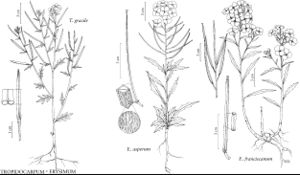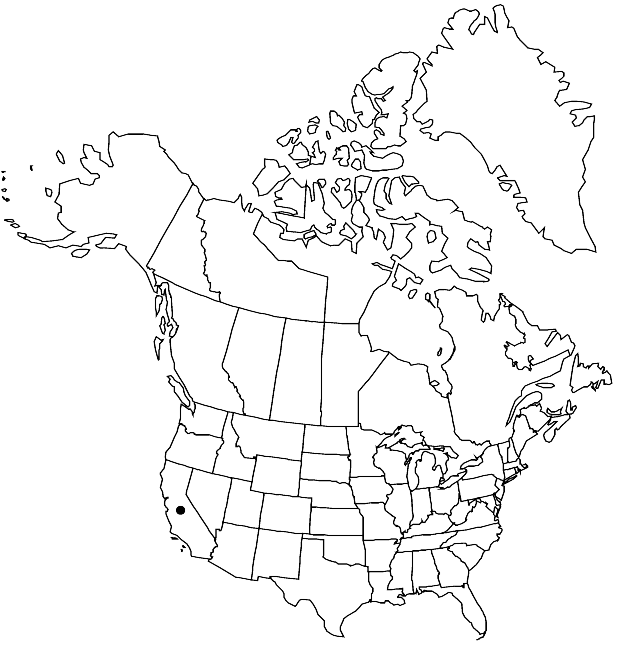Erysimum franciscanum
Aliso 4: 118. 1958.
Perennials or subshrubs. Trichomes of leaves 2-rayed mixed with 3 (–5) -rayed ones. Stems erect, often branched distally, (woody at base), 0.6–5 (–6) dm. Basal leaves (often withered in suffrutescent plants); blade oblanceolate to oblanceolate-linear, 2.5–17 cm × (2–) 3–16 (–20) mm, base attenuate, margins sinuate-dentate or dentate, apex acute. Cauline leaves (distal) petiolate; blade margins usually dentate, rarely denticulate. Racemes considerably elongated in fruit. Fruiting pedicels divaricate to ascending, stout, narrower than fruit, 5–17 (–22) mm. Flowers: sepals oblong to linear-oblong, 8–12 (–15) mm, lateral pair saccate basally; petals yellow to cream, obovate to suborbicular, 14–29 × 5–12 (–15) mm, claw 9–17 mm, apex rounded; median filaments 9–15 mm; anthers linear, 2.5–4 mm. Fruits usually ascending, rarely spreading, narrowly linear, straight or curved upward, not or, rarely, slightly torulose, (3.8–) 4–11 (–14) cm × 2–4 mm, latiseptate, not striped; valves with somewhat prominent midvein, pubescent outside, trichomes (2 or) 3 (or 4) -rayed, glabrous inside; ovules 32–64 per ovary; style cylindrical, slender, 0.5–3.5 mm, sparsely pubescent; stigma 2-lobed, lobes as long as wide. Seeds oblong, 2–3.5 (–4) × 1.2–2.2 (–2.5) mm; wing distal, present on 1 or both margins. 2n = 36.
Phenology: Flowering Jan–Apr.
Habitat: Serpentine outcrops, coastal scrub or sand dunes, granitic hillsides
Elevation: 0-500 m
Discussion
Erysimum franciscanum is known from Marin, San Francisco, San Mateo, and Santa Cruz counties. Historical records indicate that it grew previously in Sonoma County.
Selected References
None.
Lower Taxa
"wide" is not a number."elongated" is not a number."narrower" is not a number."thick" is not a number."dm" is not declared as a valid unit of measurement for this property."dm" is not declared as a valid unit of measurement for this property.

